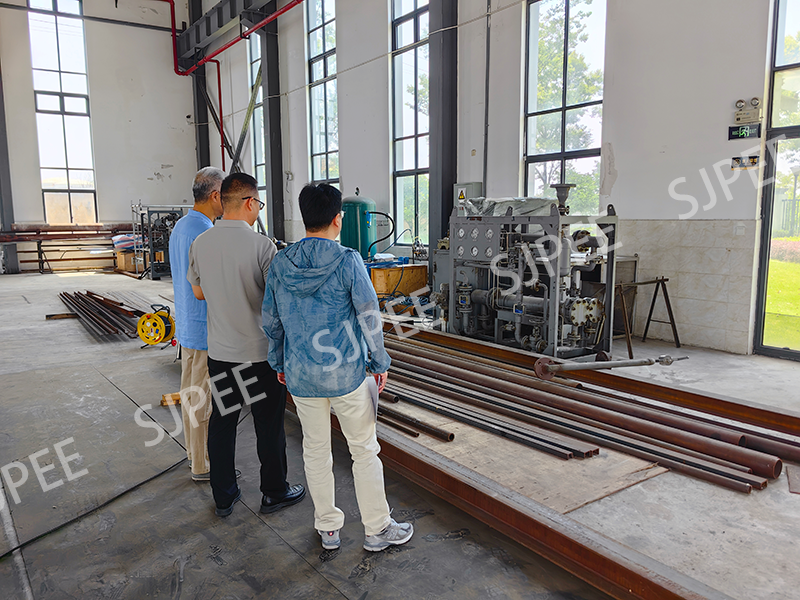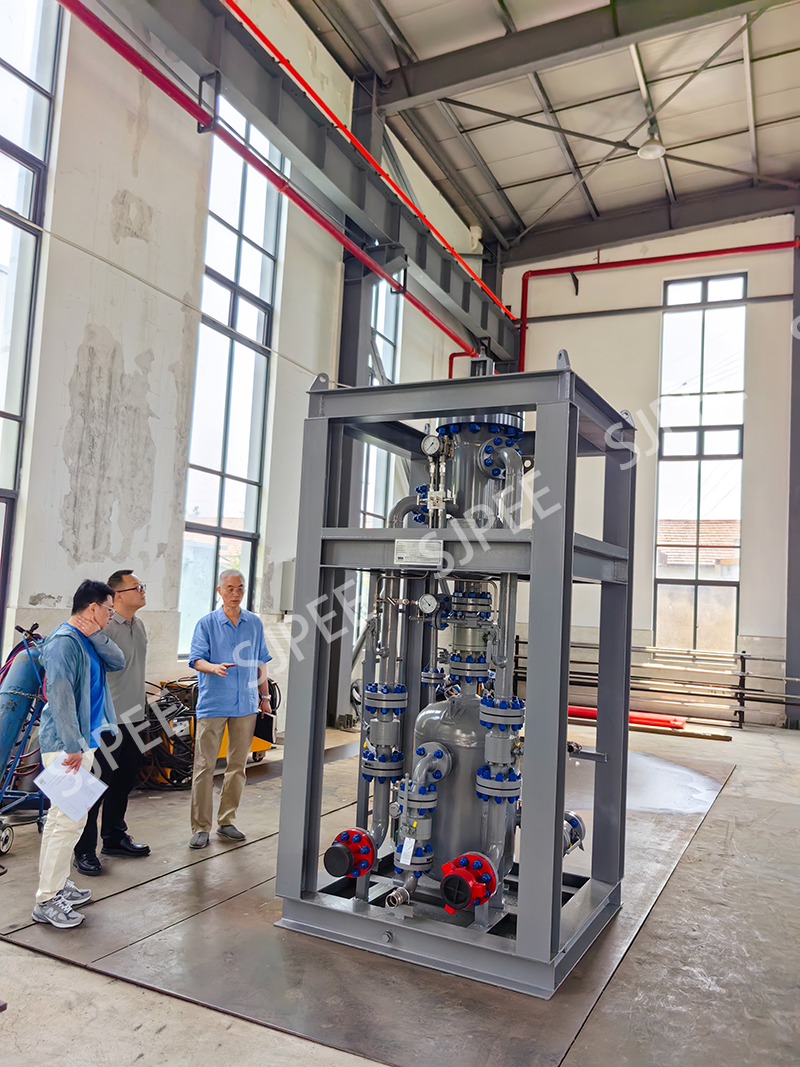On June 3, 2025, a delegation of experts from China National Offshore Oil Corporation (hereinafter referred to as “CNOOC”) conducted an on-site inspection at our company. The visit focused on a comprehensive evaluation of our manufacturing capabilities, technological processes, and quality management systems for offshore oil and gas equipment, aiming to deepen collaboration and jointly advance the high-quality development of marine energy equipment.

Figure 1 Debulky water & Deoiling hydrocyclones
CNOOC experts focused their inspection on our oil/gas processing facilities and gained in-depth understanding of our products portfolio, including Debulky water & Deoiling hydrocyclones(Figure 1).
A test skid with one debulky water hydrocyclone unit installed of two DW hydrocyclone liners and two deoiling hydrocyclone units of each installed of a single liner MF type. The three hydrocyclone units are designed in series to be used for testing the practical well stream with high water content at specific field conditions. With that test debulky water and deoiling hydrocyclone skid, it would be able to foresee the real result of water removal and produced water quality, if the hydrocyclone liners to be used for the exact field and operational conditions.

Figure 2 Solids desander by cyclonic sand removal separation
This product is solids desander by using cyclonic sand removal separation, in which those very fine particles will be separated and dropped into the lower vessel – sand accumulator(Figure 2).
The cyclonic desanding separator is a liquid-solid or gas-solid separation or their mixture equipment. They are used to remove solids in gas or well fluid or condensate, as well as seawater solidification removal or production recovery. Water injection and water flooding to increase production and other occasions. The principle of cyclonic technology is to be based on for separating of solids, including sediment, rock debris, metal chips, scale, and product crystals, from fluids (liquids, gases, or gas/liquid mixture). Combined with SJPEE’s unique patented technology, the filter element is made of high-tech ceramic wear-resistant materials or polymer wear-resistant materials or metal materials. High-efficiency of solid particle separation or classification equipment can be designed and manufactured according to different working conditions, different codes and user’s requirements or specifications.

Figure 3 Desanding hydrocyclone&Deoiling hydrocyclone
These two TEST products are Deoiling hydrocyclone and Desanding hydrocyclone(Figure 3).
A hydrocyclone skid with a boost pump of progressive cavity type installed of a single liner is to be used for testing the practical produced water at specific field conditions. With that test deoilding hydrocyclone skid, it would be able to foresee the real result if the hydrocyclone liners to be used for the exact field and operational conditions.

Figure 4 PR-10, Absolute Fine Particles Compacted Cyclonic Remover
During the equipment demonstration session, our technical team showcased a live operational test of the PR-10 Absolute Fine Particles Compacted Cyclonic Remover (Figure 4) to the CNOOC experts. By simulating high-sand-content conditions typical of oil and gas fields, the PR-10 demonstrated 98% sand removal efficiency, visually validating its exceptional performance in the confined spaces of offshore platforms.
The PR-10 hydrocyclonic element is designed and patented construction and installation for removing those extremely fine solid particles, which density is heavier than the liquid, from any liquid or mixture with gas. For example, produced water, sea-water, etc. The flow enters from the top of vessel and then into the “candle”, which is consisted of varies number of discs in which the PR-10 cyclonic element are installed. The stream with solids are then flows into the PR-10 and the solid particles is separated from the stream. The separated clean liquid is rejected into the up vessel chamber and routed into the outlet nozzle, while the solid particles are dropped into the lower solids chamber for accumulating, located in the bottom for disposal in batch operation via the sand withdraw device ((SWDTM series).
During the subsequent symposium, our company systematically presented to the expert delegation our core technological advantages, project experience, and future development plans in the offshore oil and gas equipment sector. The CNOOC experts spoke highly of our manufacturing capabilities and quality management system, while providing valuable suggestions regarding the localization of deepwater equipment, application of green low-carbon technologies, and digitalized operations & maintenance.
Both parties agreed that as marine energy development enters a new phase characterized by deepwater operations and intelligentization, it is crucial to strengthen collaborative innovation across the industrial chain.
This inspection has not only reinforced CNOOC’s recognition of our technological capabilities, but also laid a solid foundation for further deepening collaboration between both parties. Seizing this opportunity, we will continue to optimize production processes and enhance product quality, with the goal of partnering with CNOOC to advance independent R&D and large-scale application of high-end offshore oil & gas equipment—jointly contributing to the efficient development of China’s marine energy resources.
Moving forward, we remain committed to our development philosophy of “customer demand-oriented, technology innovation-driven” growth, creating sustained value for clients through three key dimensions:
1. Discover potential problems in production for users and solve them;
2. Provide users with more suitable, more reasonable and more advanced production plans and equipment;
3. Reduce operation and maintenance requirements, reduce foot-print area, equipment weight(dry/operation), and investment costs for users.
Post time: Jun-05-2025
